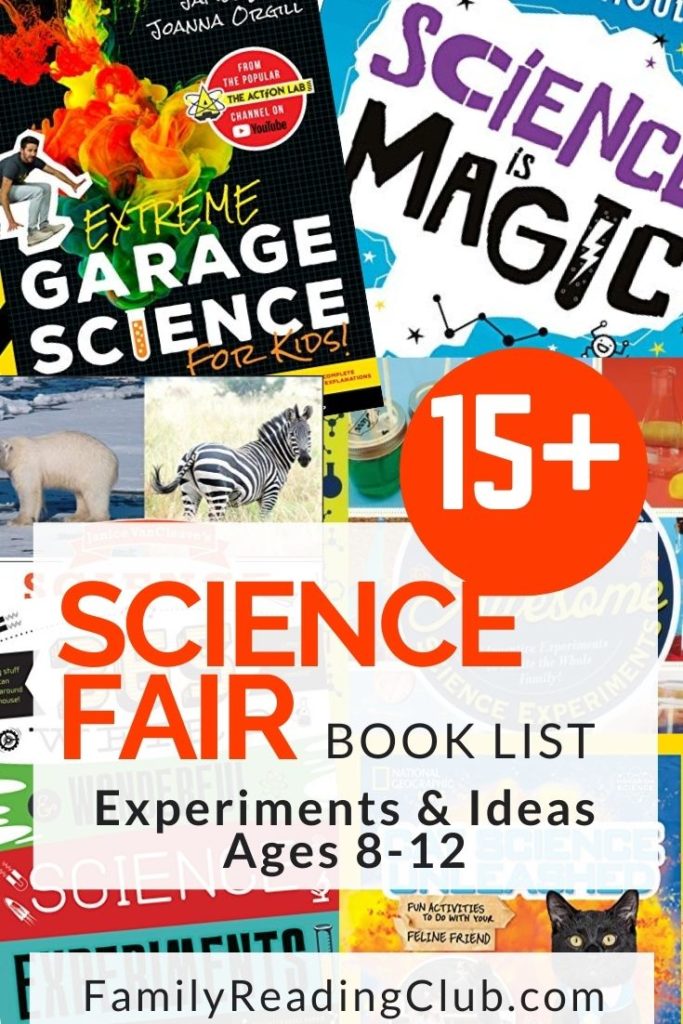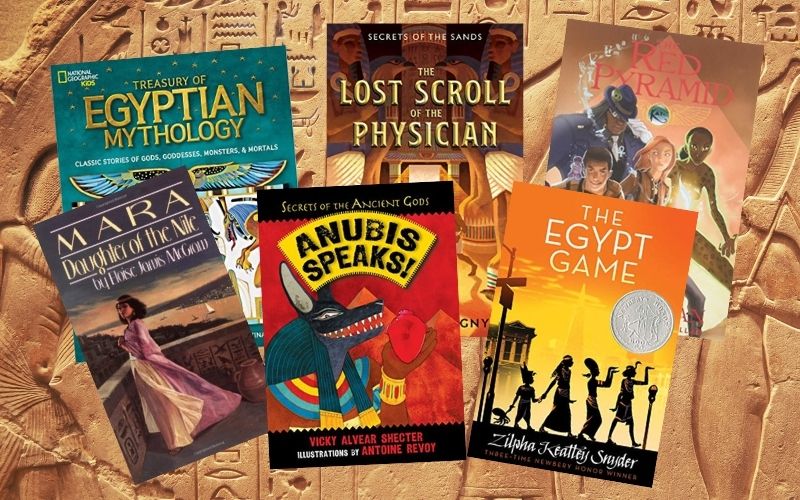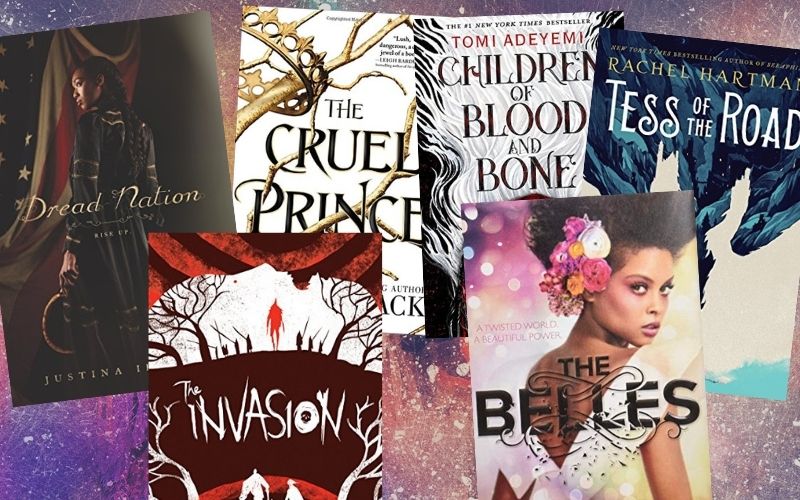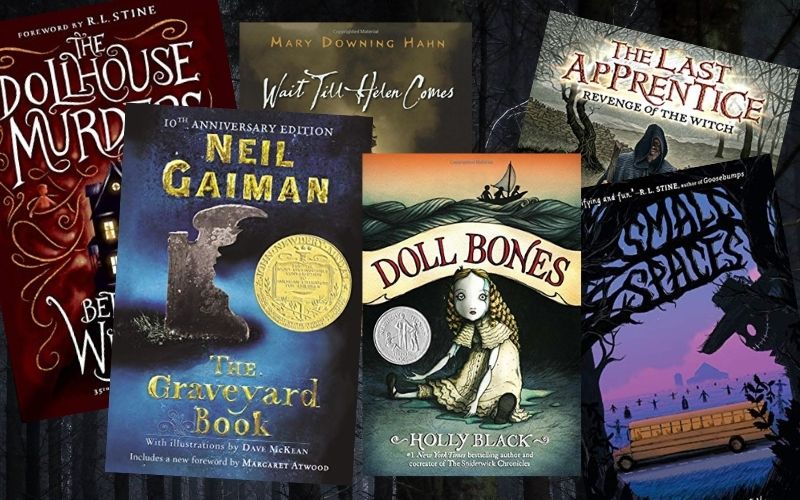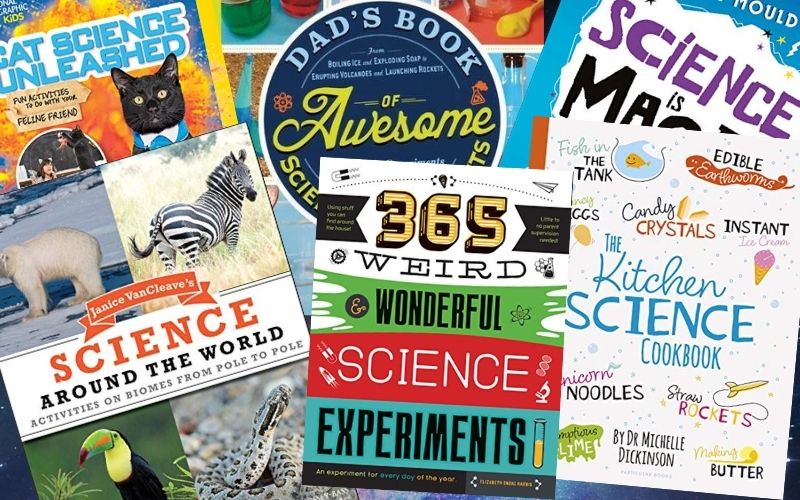
15+ Science Fair Books for Elementary School Students (Ages 8-12) | Reading List
Twice a year, usually in early spring or early fall, elementary and middle school students come to my library to find science fair books.
Usually these are books with pre-written science experiments that they can follow and enter in their school’s science fair. It’s a good way to get started with learning how to set up a science experiment, run trials, and extrapolate results to present to a group of people.
However, there’s a snag: most school science fairs have either banned or strongly encouraged students to NOT do the standard science experiments like growing sprouts, erupting volcanoes, or shooting light through a crystal. And honestly, most kids don’t want to do those experiments, either! They want to do something NEW and COOL and not be “volcano experiment #5” at their science fair.
But how do they FIND those books?
By asking a librarian, of course! There’s a whole amazing section of the library dedicated to science and science experiments, and there are some neat books published nowadays that have highly unusual, exciting, kid-friendly experiments.
>> See also: How to use the Dewey Decimal System to Find Books in the Non-Fiction Section
I’ve put together a list of science fair books to give you some idea of what’s out there. If your family is looking for resources for a science fair, or just to have science-y fun at home, check out these books.
Ideas for Science Fair Experiments
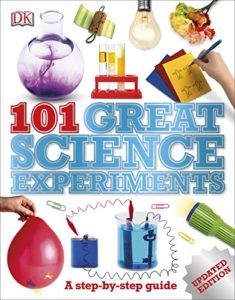
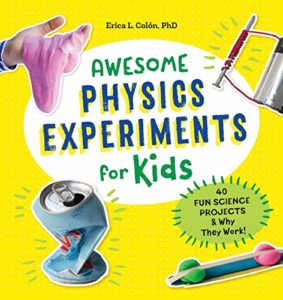

101 Great Science Experiments: A Step-by-Step Guide by Neil Ardley. Part of the DK line of books, this classic book is organized into 11 different science subjects, making it easy to find a specific type of experiment. Also has photos/illustrations and easy-to-follow step-by-step instructions. Grades 3-7.
Awesome Physics Experiments for Kids: 40 Fun Science Projects and Why They Work by Erica L. Colon, PhD. This is part of a series of books with tightly-focused themed experiments (see also: Engineering, Awesome Science) written by a board-certified science teacher. Includes step-by-step instructions, large color photographs, and experiments that use cheap, easy-to-find materials. Also available for free on Kindle Unlimited! Grades 3-7.
Kitchen Science Lab for Kids: 52 Mouth-Watering Recipes and the Everyday Science That Makes Them Taste Amazing by Liz Lee Heinecke. Nothing better than an experiment that ends with something yummy to eat! This book combines two interests: cooking, and science. Great for kids who don’t see themselves as “scientists” but still want to learn about things like chemical reactions, temperature fluctuations, and bacteria.
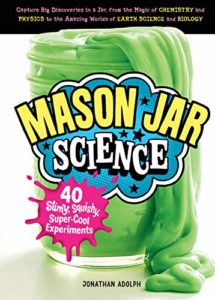
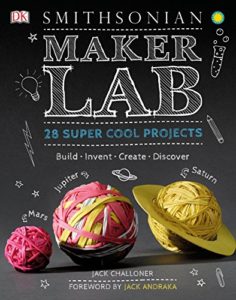
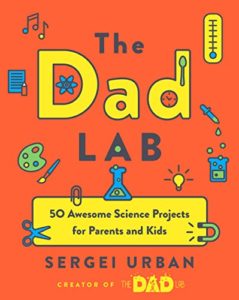
Mason Jar Science: 40 Slimy, Squishy, Super-Cool Experiments by Jonathan Adolph. Mason jars can host a lot of cool science experiments, such as miniature clouds, tiny tornadoes, small stalactites, and a LOT of slime. Bonus: they’re portable, easy to carry, and cheap to buy!
Maker Lab: 28 Super Cool Projects by Jack Challoner. Turn household objects into cool science experiments like race balloon rocket cars or a lemon battery (or, of course, slime) with this National Parenting Publication Award winner book from the Smithsonian. I particularly like how each experiment has a time estimate, as well as a difficulty ranking.
TheDadLab: 50 Awesome Science Projects for Parents and Kids by Sergei Urban. Not just for dads, this book features experiments and science projects using household objects and everyday materials. These projects are meant to be easy and quick, and anybody can do them– even parents who haven’t had a science class in 20 years. Love the conversational writing style and crystal clear instructions.
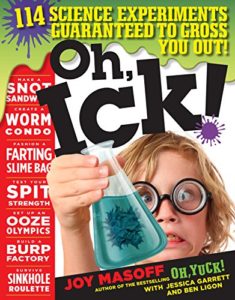

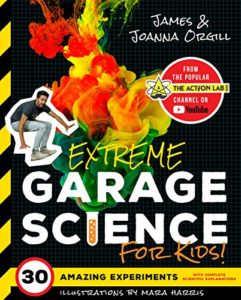
Oh, Ick!: 114 Science Experiments Guaranteed to Gross You Out! by Joy Masoff. Focusing on experiments with things that give me the shivers, this book could be a good choice for kids who like, well, the disgusting side of life. Topics include things like mold, insects, stink bombs, and poop (well, the bacteria that lives in poop, anyway). Written in a humorous but highly informative style, with fun graphics.
Science Around the World: Activities on Biomes from Pole to Pole by Janice VanCleave. I like this book because it’s focused on geographic locations and earth science– different from the other books on this list, which are mostly focused on chemical reactions. Good for experiments about climate, animal behavior, biomes and habitats, animal migration, etc.
Extreme Garage Science for Kids! by James Orgill and Joanna Orgill. Written by the creators of the popular Youtube channel The Action Lab, this book has some really interesting, unique experiments like drawing on water and making Newtonian fluid. Includes full color photographs and illustrations.
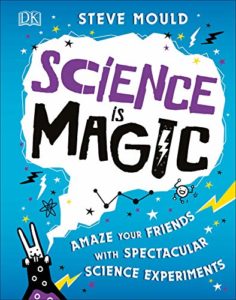
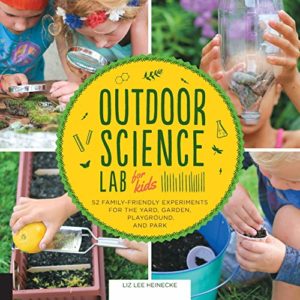
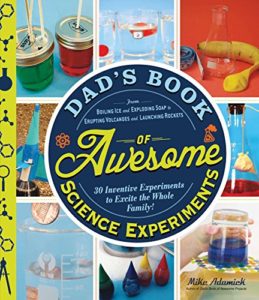
Science is Magic: Amaze your Friends with Spectacular Science Experiments by Steven Mould. Learn the science behind magic tricks such as bending water with a balloon, creating ghosts with mirrors, and turning water into juice. Features step-by-step photos, profiles of famous magicians, and lots of fun facts about science AND magic. A great option for kids who are into magic tricks already, and want to learn more about the WHY and HOW.
Outdoor Science Lab for Kids: 52 Family-Friendly Experiments for the Yard, Garden, Playground, and Park by Liz Lee Heinecke. Take your science fun outside with this book! Some topics covered include: physics, centripetal forces, germination, surface tension and capillary action. These experiments are good for a wide range of age levels– so take the whole family out for a day of science fun. Includes complete materials lists, clear step-by-step photographs, and finished samples.
Dad’s Book of Awesome Science Experiments: From Boiling Ice and Exploding Soap to Erupting Volcanoes and Launching Rockets, 30 Inventive Experiments to Excite the Whole Family! by Mike Adamick. Not just for dads! This book features experiments that can be done with household objects, such as: soap clouds (chemistry), straw balloon rocket blasters (physics), acid rain (earth science), and marshmallow pulse keepers (human body). Lots of full color photographs and easy to understand instructions.
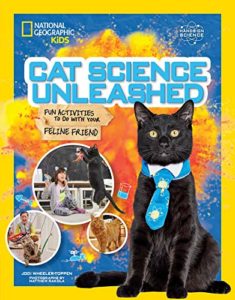
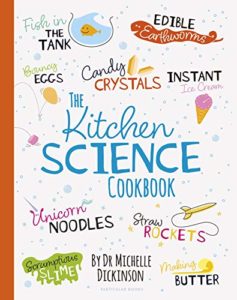
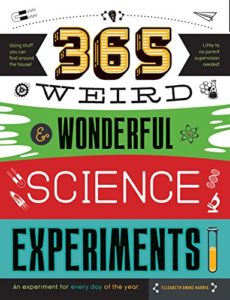
Cat Science Unleashed by Jodi Wheeler-Topper. Having a pet cat might give your student a boost among other science fair attendees– this book has 22 safe and cat-friendly activities that encourage your young scientist to put their observational skills to use. Learn about how cats see so well in the dark, how their balance is different from humans (and other animals), and much, much more. Each experiment includes step-by-step instructions, clear scientific explanations, and full color photographs.
The Kitchen Science Cookbook by Michelle Dickenson. Written by a nanotechnologist and educator, this cookbook is full of unique and interesting recipes for young scientists and food enthusiasts alike. I love the recipes in this book: unicorn noodles, edible slime, candies that are also CANDLES– so cool!
365 Weird & Wonderful Science Experiments by Elizabeth Snoke Harris. Featuring quick and easy experiments, using household materials. Each experiment has safety precautions, materials needed, step-by-step instructions with illustrations and fun facts. This book specifically mentions that experiments can be done solo or with parental supervision, making this a good way for young scientists to get more confident with doing activities on their own.
If you found this post useful, please share it with your friends!
